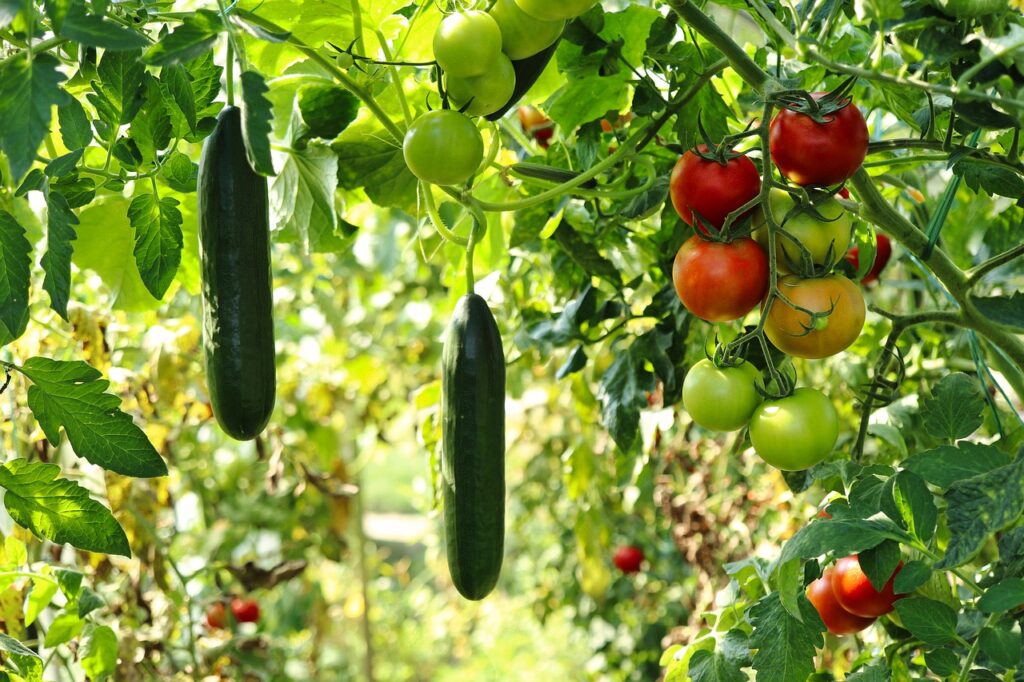Looking for a way to increase your garden’s production and decrease the amount of upkeep needed? Try your hand at companion planting.
Companion Planting — What Is It?
Companion planting refers to when a garden grows two or more plants together to create mutually beneficial growth in the garden. These benefits are seen through:
- Growth promotion — When grown together, some plants will help each other thrive by providing support, shelter, and root space.
- Pest deterrents — Certain plants are known to deter any common pests.
- Pollinator attraction — Often, companion planting will attract beneficial insects. This allows a garden to yield more produce while also creating a more balanced ecosystem.
Examples of Companion Planting
There are a few different ways gardeners can choose to utilize the benefits of companion planting. This includes fruit and vegetable companions, herb companions, and flower companions.
(*Please note: The following lists are not conclusive. They are meant to give gardeners a few ideas when thinking about what to plant.)

Fruit And Vegetable Companions
There are several different ways a gardener can choose to utilize the benefits of companion planting. One great way is to place certain fruits and/or vegetables next to each other. A few companion planting ideas for fruits and vegetables are:
- Cucumbers — These are the perfect companion plants to onions, leeks, tomatoes, and melons.
- Strawberries — These are great to plant with beans, spinach, onion, and peas.
- Peppers — Try to plant peppers with cucumbers, carrots, asparagus, and squash.
- Potatoes — Try planting potatoes with beans, corn, and/or cabbages.
- Tomatoes — Beans, lettuce, squash, and asparagus are great companion plants for tomatoes.
However, there are also plants that should avoid being planted together; this is to avoid competition for space, water, light, nutrients, or because one plant will attract detrimental insects to the other. Some examples of this include:
- Cucumbers — Don’t plant cucumbers near potatoes or melons.
- Strawberries — Shouldn’t be near peppers, broccoli, or cabbages.
- Peppers — Avoid planting peppers with beans or strawberries.
- Potatoes — Plant them away from any squash, asparagus, strawberries, or raspberries.
- Tomatoes — Avoid planting tomatoes with potatoes, peppers, aubergine, or corn.
Flower Companion Planting
A great way to add some color to any vegetable garden is by adding some flowers. Luckily, there are three flowers that are perfect companion plants to any vegetable garden. These include the marigold, nasturtiums, and calendula.
- Nasturtiums will deter aphids from vegetables. They act as “sacrificial plants,” attracting aphids and black flies towards themselves and away from the surrounding vegetables.
- Calendula plants are great for attracting pollinators like bees and hoverflies.
- Finally, the marigold flower will deter harmful pests.
Herbs As Companion Plants
Herbs are great at repelling pests. Because of this, they make great companion plants that can be dispersed throughout the garden. Some great herbs to use for this purpose are lavender, mint, rosemary, oregano, and thyme.
Additional Tips for Companion Planting
There are some more general tips that can help any gardener create a successful harvest. These include:
- When plants from the same family are planted together, the plants will be competing against each other for nutrients. For this reason, it is best to make sure the plants are separated throughout the garden.
- Legumes and plants from the pea family provide excess nitrogen into the soil. For this reason, these plants are the perfect companion to fruits.
- Be sure to attract pollinators to help your garden flourish by planting some insect and bird-friendly companion plants.
- Make sure to do some research and plan out your garden as much as possible. This will help you ensure you’re informed about each plant you’re planting, the benefits they can have to other plants, and any drawbacks that may need to be addressed.
With some thinking and careful planning, any gardener can ensure that their plants thrive throughout the season!
